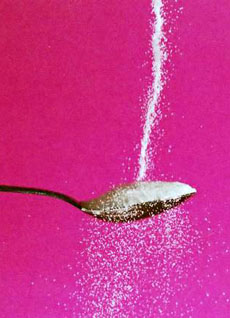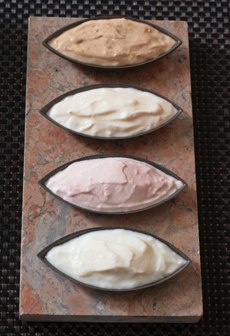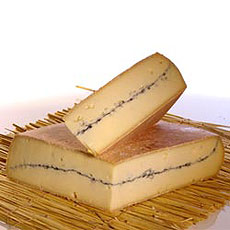| Toney diners who once would have frowned on taking home leftovers are now packing up the doggie bag after putting on the Ritz. The affluent still dine out, notes David Pogrebin, manager of New York City’s historic Brasserie restaurant (we’ve been dining there since childhood). But in the thick of a recession, even those at the top are tightening their belts through a growing trend of bringing home leftovers. And of course, that duck breast is not going to the dog—if it ever did—nor is the risotto and other rich “doggie bag” contents that would be questionable additions to Fido’s bowl.
Since Elizabethan times at least, restaurants provided extra-large napkins—not only because people ate with their hands, but they used them to wrap up and take home any leftovers. Paper bags did come around in time, but in 1949, Al Meister, owner of a Chicago-based packaging company called Bagcraft Papercon, developed a coated paper bag that was grease-resistant. He is credited with inventing the “doggie bag”—and the take-out bag, for that matter. Grease-resistant soon evolved into foil-coated bags with quirky drawings of Fido, with the blaring headline, “Doggie bag.” No wonder people of good breeding didn’t want to be seen carrying them! |
|

Snazzy doggie bag. |
|
These days, with everyone pinching pennies, who can blame Park Avenue folks if they take the last few morsels of steak frites back to their $4 million apartments. We’re big fans of Executive Chef Luc Dimnet’s cuisine, too, and we wouldn’t leave a morsel on the plate, recession or boom. And it’s not only good for the pocketbook, it’s good for the waistline.
But the lesson here, boys and girls, is no matter how casual or fine the restaurant, no matter how large or small the amount of leftover food: You’ll be sorry you didn’t take it home. You’ve paid for it, it’s yours, and management doesn’t like to see good food thrown out. They’re flattered that you like it so much, you want to take it home.
By the way, while New Yorkers previously could not remove wine from restaurants, the State Liquor Authority informs us as of September 9, 2004, that rule was changed, enabling you to benefit financially from a “Wine Doggie Bag” as well. We quote:
“Legislation has been enacted which provides a procedure under which a restaurant licensee may permit a patron, following the patron’s consumption of a full course meal, to remove one partially consumed bottle of wine from the restaurant. The limitations, conditions, and procedures regarding a restaurant patron’s removal of one partially consumed bottle of wine from the restaurant are discussed in Bulletin No. 588. To view this bulletin click on the following link: SLA Bulletin No. 588”
Salient points from the pdf:
“At the conclusion of the meal, the restaurant patron must be provided with a dated receipt which indicates both the purchase of a full course meal and the purchase of the wine. A receipt which is undated does not satisfy the requirements of the statute. A receipt which fails to indicate that the wine was purchased in connection with a full course meal is insufficient, because the statute requires that the wine be purchased in connection with a full course meal. Before a restaurant licensee may permit a partially consumed bottle of wine to leave the restaurant, the restaurant licensee or an agent of the restaurant licensee must:
• securely reseal the bottle of wine;
• place the resealed bottle in a one-time-use tamper-proof transparent bag, and
• securely seal the bag.
The one-time-use tamper-proof transparent bag must insure that the patron cannot gain access to the bottle while in transit after the bag is sealed.”
What this means is, you can’t open the bottle to drink until you get home—no drinking and driving. The bag is transparent so that you can’t hide the goods from any law official stopping you in transit. Regulations for wine will vary according to each state’s rules.
|




